Содержание
- 2. Preview Opportunity costs and comparative advantage A one-factor Ricardian model Production possibilities Gains from trade Wages
- 3. Introduction Theories of why trade occurs: Differences across countries in labor, labor skills, physical capital, natural
- 4. Introduction (cont.) Sources of differences across countries that lead to gains from trade: The Ricardian model
- 5. Comparative Advantage and Opportunity Cost The Ricardian model uses the concepts of opportunity cost and comparative
- 6. Comparative Advantage and Opportunity Cost (cont.) For example, a limited number of workers could produce either
- 7. Comparative Advantage and Opportunity Cost (cont.) Suppose that in the United States 10 million roses could
- 8. Comparative Advantage and Opportunity Cost (cont.) A country has a comparative advantage in producing a good
- 9. Comparative Advantage and Opportunity Cost (cont.) Suppose initially that Colombia produces computers and the United States
- 10. Table 3-1: Hypothetical Changes in Production
- 11. Comparative Advantage and Trade When countries specialize in production in which they have a comparative advantage,
- 12. A One-Factor Ricardian Model The simple example with roses and computers explains the intuition behind the
- 13. A One-Factor Ricardian Model (cont.) Labor is the only factor of production. Labor productivity varies across
- 14. A One-Factor Ricardian Model (cont.) Two goods: wine and cheese. Competition allows workers to be paid
- 15. A One-Factor Ricardian Model (cont.) A unit labor requirement indicates the constant number of hours of
- 16. A One-Factor Ricardian Model (cont.) Labor supply L indicates the total number of hours worked in
- 17. Production Possibilities The production possibility frontier (PPF) of an economy shows the maximum amount of a
- 18. Production Possibilities (cont.) Maximum home cheese production is QC = L/aLC when QW = 0. Maximum
- 19. Production Possibilities (cont.) For example, suppose that the economy’s labor supply is 1,000 hours. The PPF
- 20. Fig. 3-1: Home’s Production Possibility Frontier
- 21. Production Possibilities (cont.) The opportunity cost of cheese is how many gallons of wine Home must
- 22. Production Possibilities (cont.) Producing an additional pound of cheese requires aLC hours of labor. Each hour
- 23. Production Possibilities (cont.) For example, if 1 hour of labor is moved to cheese production, that
- 24. Relative Prices, Wages, and Supply Let PC be the price of cheese and PW be the
- 25. Relative Prices, Wages, and Supply (cont.) If the price of cheese relative to the price of
- 26. Relative Prices, Wages, and Supply (cont.) If the price of cheese relative to the price of
- 27. Production, Prices, and Wages If the price of cheese relative to the price of wine equals
- 28. Production, Prices, and Wages (cont.) For example, suppose cheese sells for PC = $4/pound and wine
- 29. Production, Prices, and Wages (cont.) If the price of cheese drops to PC = $3/pound: Wage
- 30. Production, Prices, and Wages (cont.) If the home country wants to consume both wine and cheese
- 31. Trade in the Ricardian Model If the home country is more efficient in wine and cheese
- 32. Trade in the Ricardian Model (cont.) A country can be more efficient in producing both goods,
- 33. Trade in the Ricardian Model (cont.) Suppose that the home country has a comparative advantage in
- 34. Trade in the Ricardian Model (cont.) Since the slope of the PPF indicates the opportunity cost
- 35. Fig. 3-2: Foreign’s Production Possibility Frontier
- 36. Trade in the Ricardian Model (cont.) Before any trade occurs, the relative price of cheese to
- 37. Trade in the Ricardian Model (cont.) To see how all countries can benefit from trade, need
- 38. Relative Supply and Relative Demand If the relative price of cheese falls below the opportunity cost
- 39. Relative Supply and Relative Demand (cont.) When the relative price of cheese equals the opportunity cost
- 40. Relative Supply and Relative Demand (cont.) When the relative price of cheese settles strictly in between
- 41. Relative Supply and Relative Demand (cont.) When the relative price of cheese equals the opportunity cost
- 42. Relative Supply and Relative Demand (cont.) If the relative price of cheese rises above the opportunity
- 43. Relative Supply and Relative Demand (cont.) World relative supply is a step function: First step at
- 44. Relative Supply and Relative Demand (cont.) Relative demand of cheese is the quantity of cheese demanded
- 45. Fig. 3-3: World Relative Supply and Demand
- 46. Gains from Trade Gains from trade come from specializing in the type of production which uses
- 47. Gains from Trade (cont.) Domestic workers earn a higher income from cheese production because the relative
- 48. Gains from Trade (cont.) Think of trade as an indirect method of production that converts cheese
- 49. Gains from Trade (cont.) Consumption possibilities expand beyond the production possibility frontier when trade is allowed.
- 50. Fig. 3-4: Trade Expands Consumption Possibilities
- 51. A Numerical Example What is the home country’s opportunity cost of producing cheese? aLC /aLW =
- 52. A Numerical Example (cont.) The home country is more efficient in both industries, but has a
- 53. A Numerical Example (cont.) With trade, the equilibrium relative price of cheese to wine settles between
- 54. A Numerical Example (cont.) With trade, the foreign country can buy one pound of cheese for
- 55. A Numerical Example (cont.) With trade, the home country can buy one gallon of wine for
- 56. Relative Wages Relative wages are the wages of the home country relative to the wages in
- 57. Relative Wages (cont.) Suppose that PC = $12/pound and PW = $12/gallon. Since domestic workers specialize
- 58. Relative Wages (cont.) The relative wage lies between the ratio of the productivities in each industry.
- 59. Relative Wages (cont.) These relationships imply that both countries have a cost advantage in production. High
- 60. Relative Wages (cont.) Because foreign workers have a wage that is only 1/3 the wage of
- 61. Do Wages Reflect Productivity? Do relative wages reflect relative productivities of the two countries? Evidence shows
- 62. Productivity and Wages
- 63. Do Wages Reflect Productivity? (cont.) Other evidence shows that wages rise as productivity rises. As recently
- 64. Misconceptions about Comparative Advantage Free trade is beneficial only if a country is more productive than
- 65. Misconceptions about Comparative Advantage (cont.) Free trade with countries that pay low wages hurts high wage
- 66. Misconceptions about Comparative Advantage (cont.) Free trade exploits less productive countries whose workers make low wages.
- 67. Comparative Advantage with Many Goods Suppose now there are N goods produced, indexed by i =
- 68. Comparative Advantage with Many Goods (cont.) Let w represent the wage rate in the home country
- 69. Table 3-2: Home and Foreign Unit Labor Requirements
- 70. Comparative Advantage with Many Goods (cont.) Suppose there are 5 goods produced in the world: apples,
- 71. Comparative Advantage with Many Goods (cont.) If each country specializes in goods that use resources productively
- 72. Comparative Advantage with Many Goods (cont.) How is the relative wage determined? By the relative supply
- 73. Comparative Advantage with Many Goods (cont.) Suppose w/w* increases from 3 to 3.99: The home country
- 74. Fig. 3-5: Determination of Relative Wages
- 75. Comparative Advantage with Many Goods (cont.) Finally, suppose that relative supply of labor is independent of
- 76. Transportation Costs and Non-traded Goods The Ricardian model predicts that countries completely specialize in production. But
- 77. Transportation Costs and Non-traded Goods (cont.) Nontraded goods and services (ex., haircuts and auto repairs) exist
- 78. Empirical Evidence Do countries export those goods in which their productivity is relatively high? The ratio
- 79. Fig. 3-6: Productivity and Exports
- 80. Empirical Evidence (cont.) A very poor country like Bangladesh can have comparative advantage in clothing despite
- 81. Table 3-3: Bangladesh versus China, 2011
- 82. Empirical Evidence (cont.) The main implications of the Ricardian model are well supported by empirical evidence:
- 83. Summary Differences in the productivity of labor across countries generate comparative advantage. A country has a
- 84. Summary (cont.) Countries export goods in which they have a comparative advantage - high productivity or
- 86. Скачать презентацию
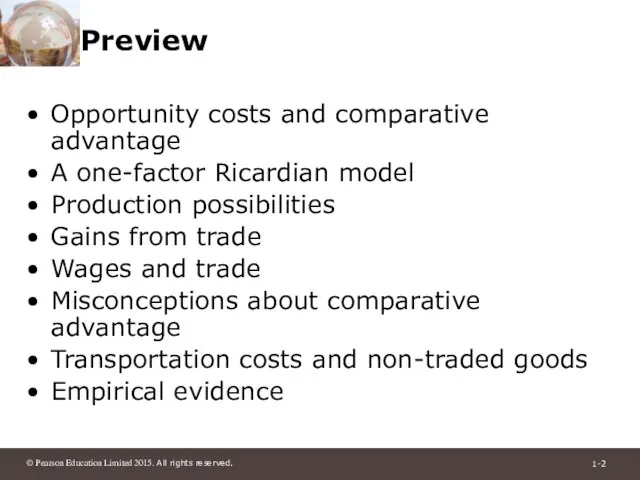

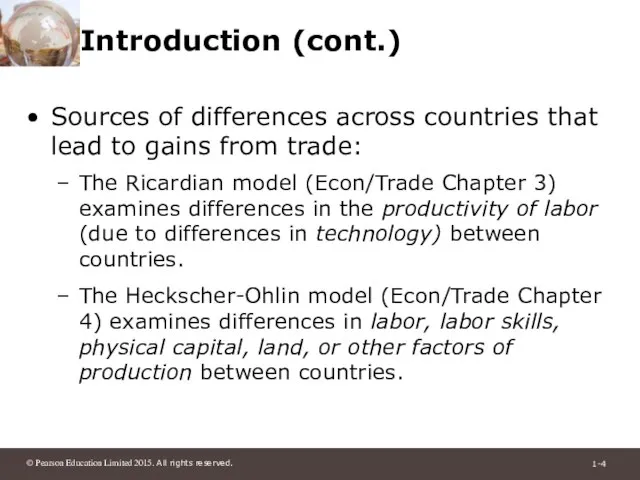
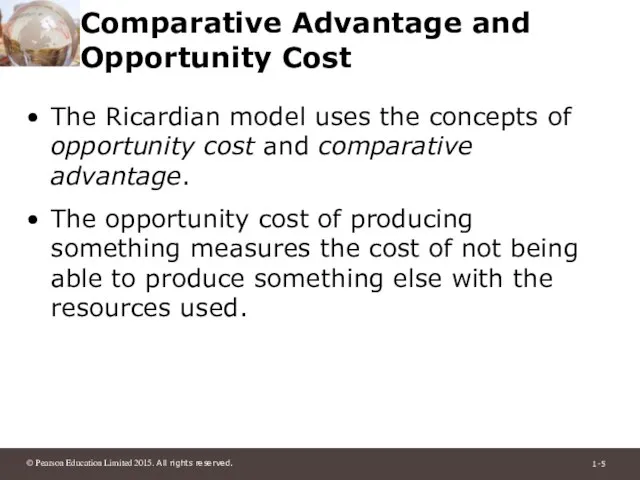
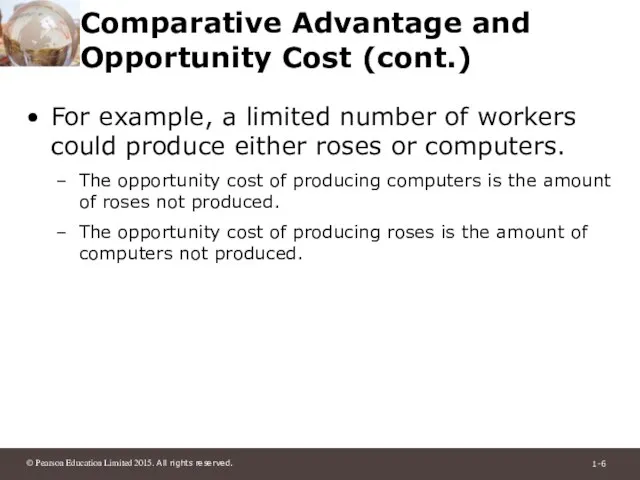
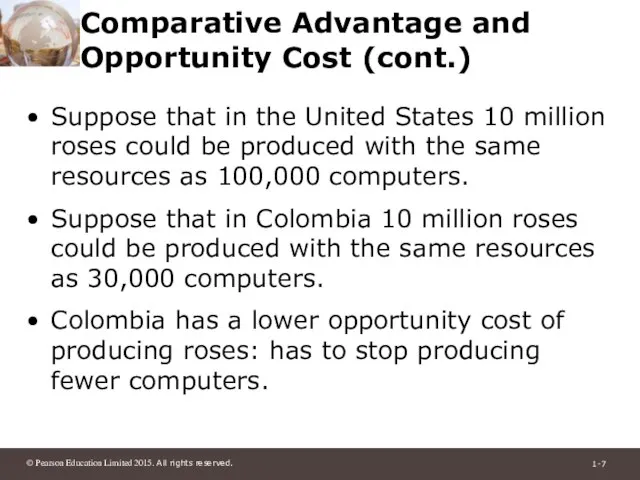



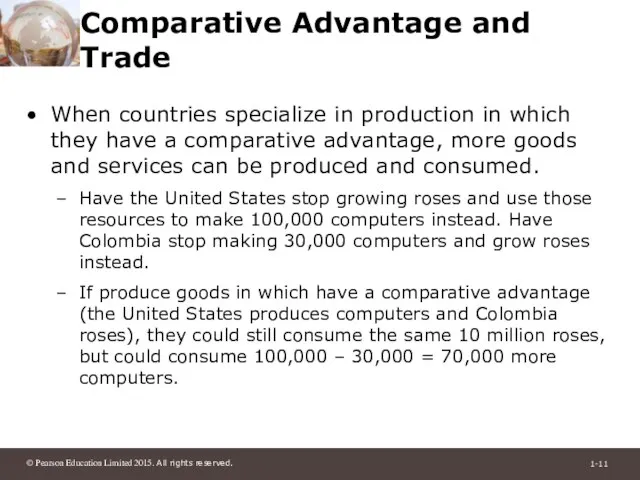
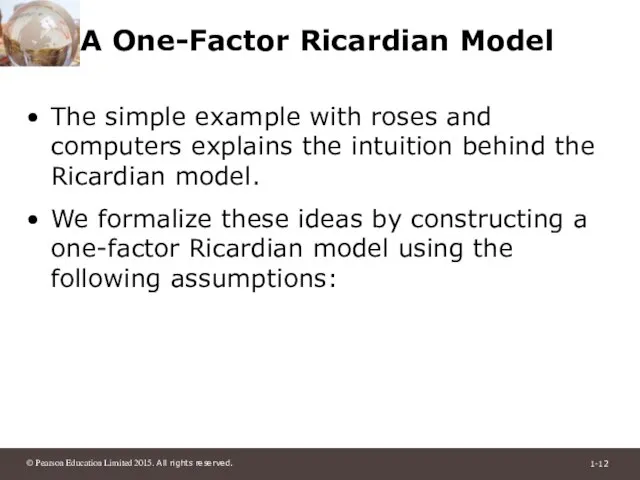
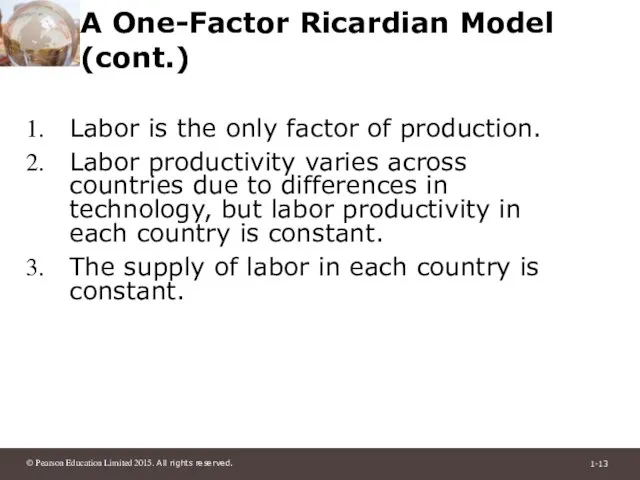
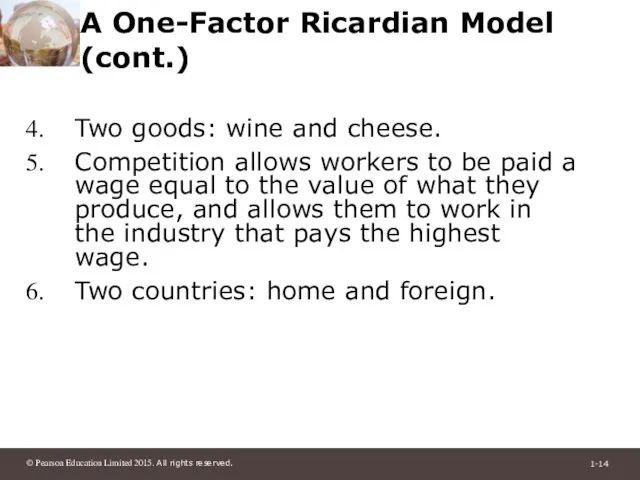



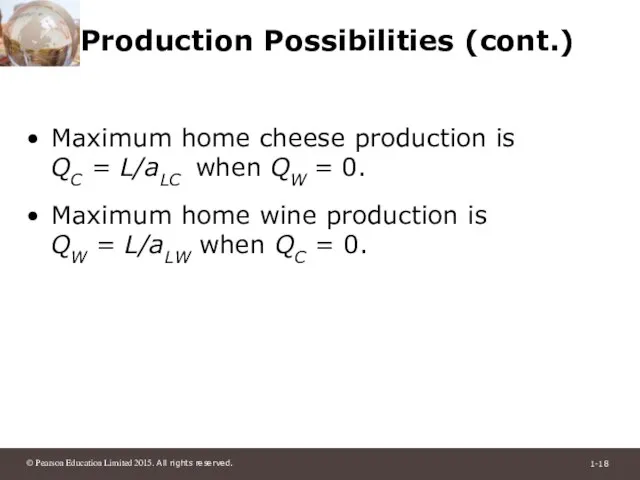


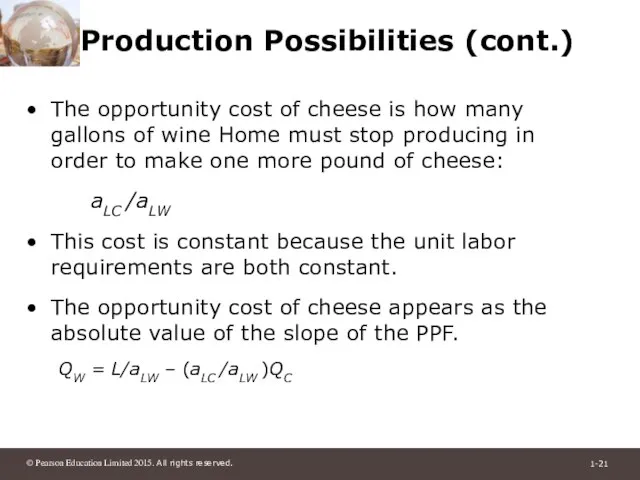
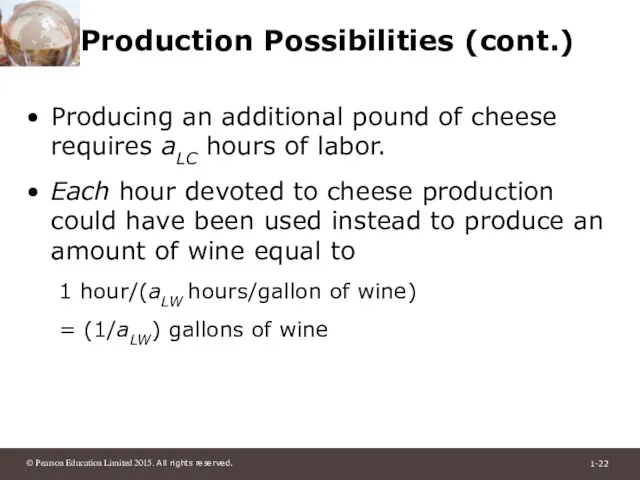
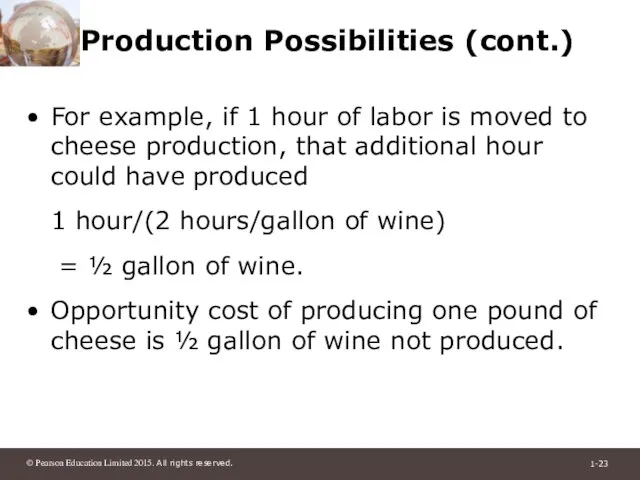
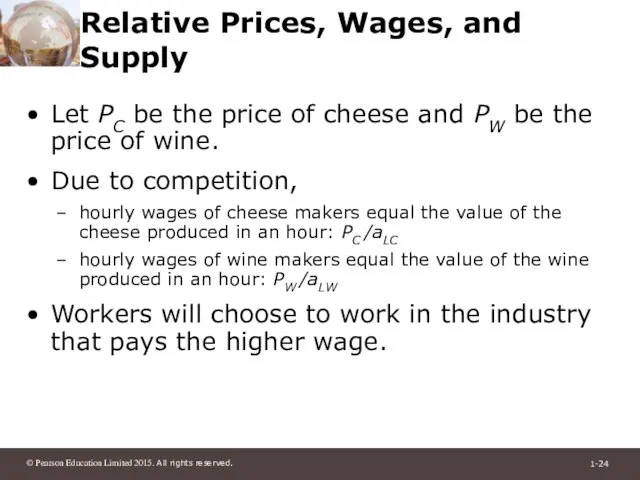

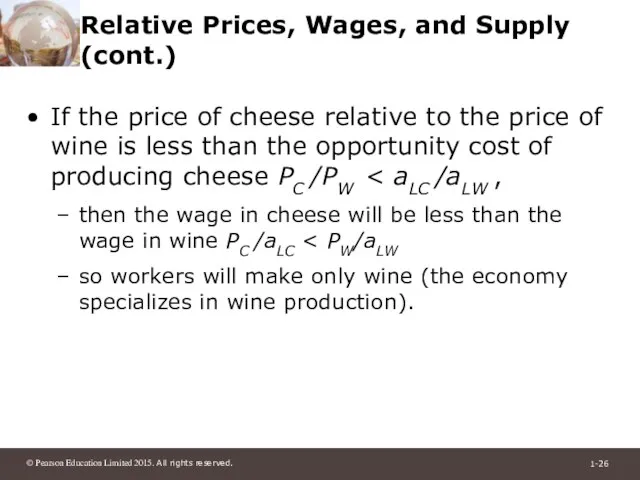
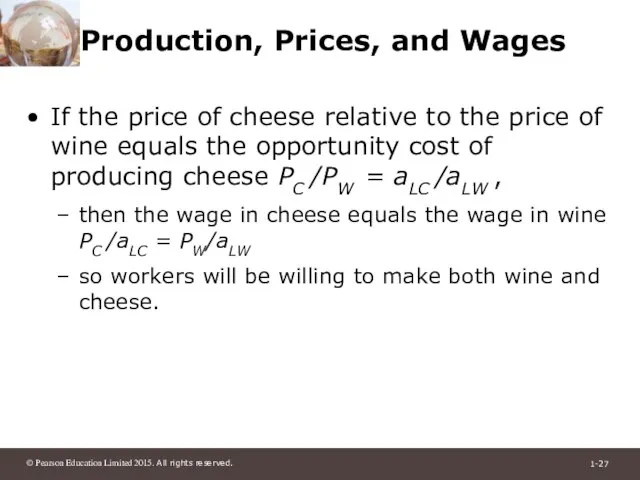

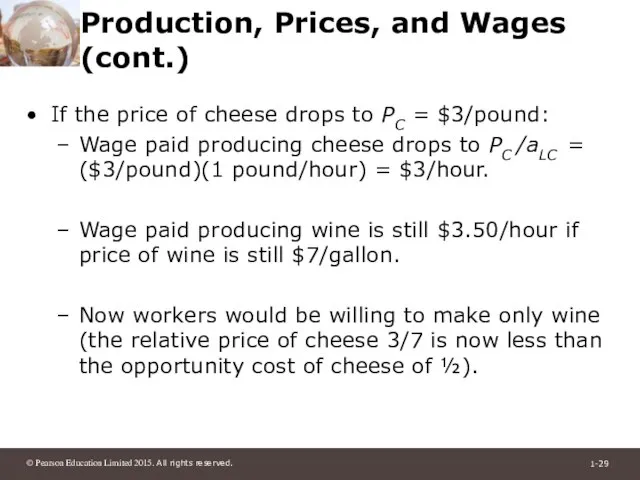

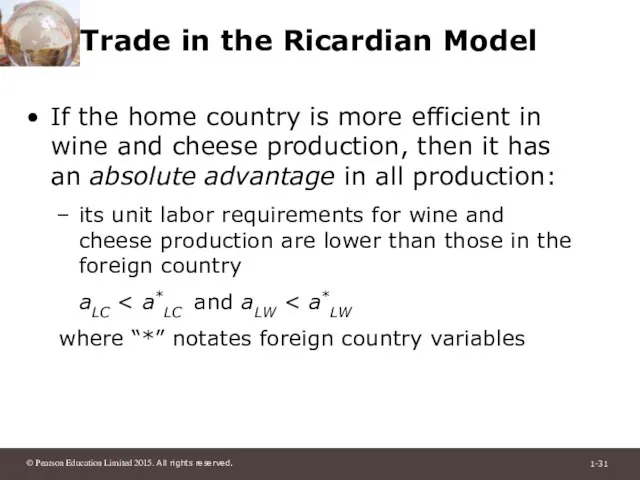

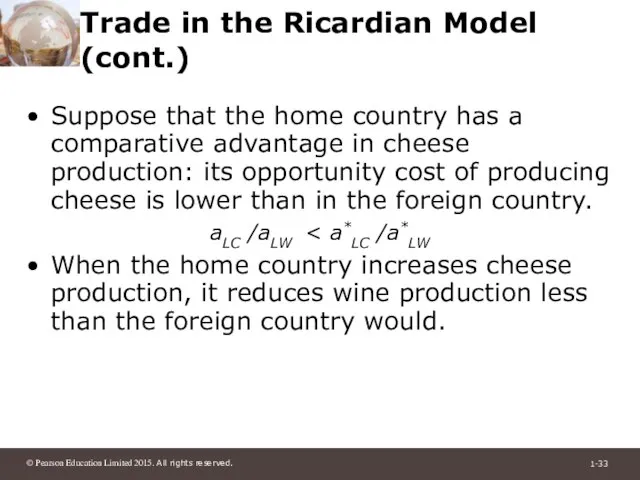
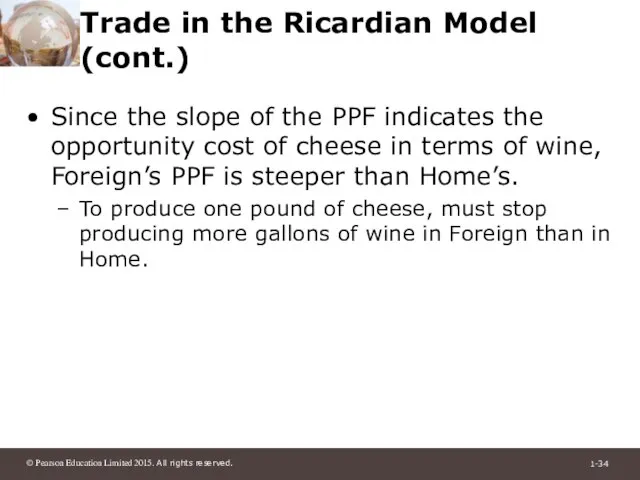

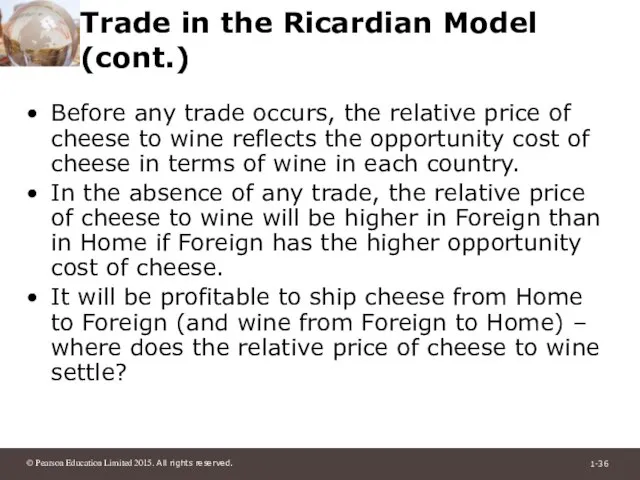
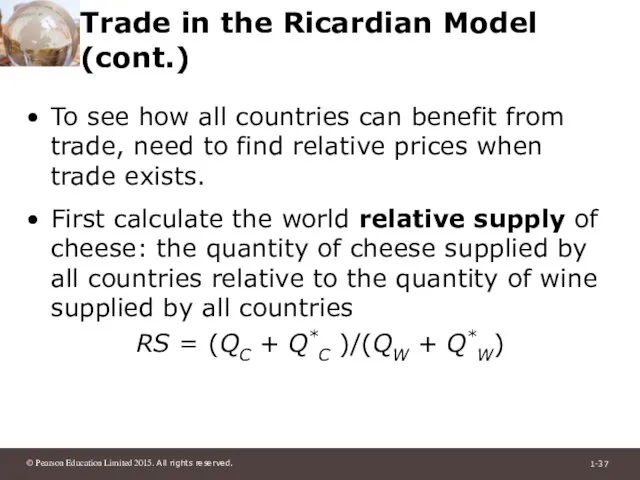
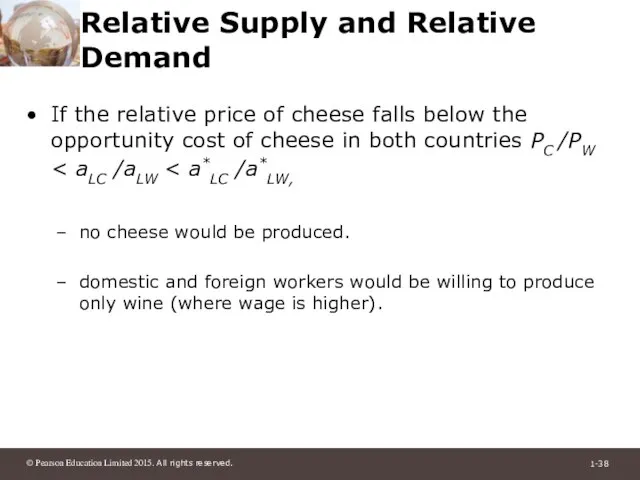

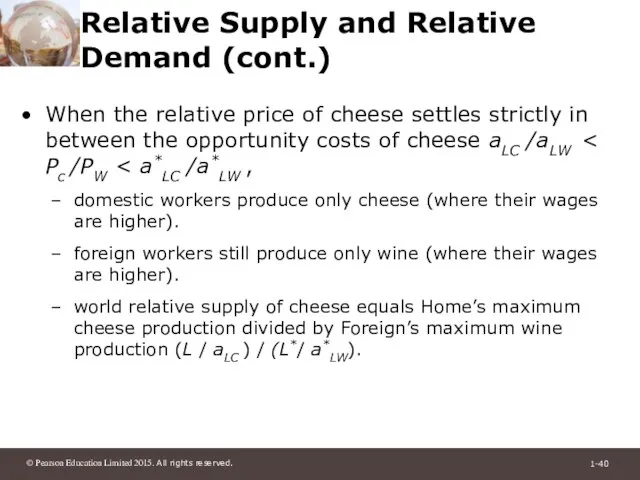

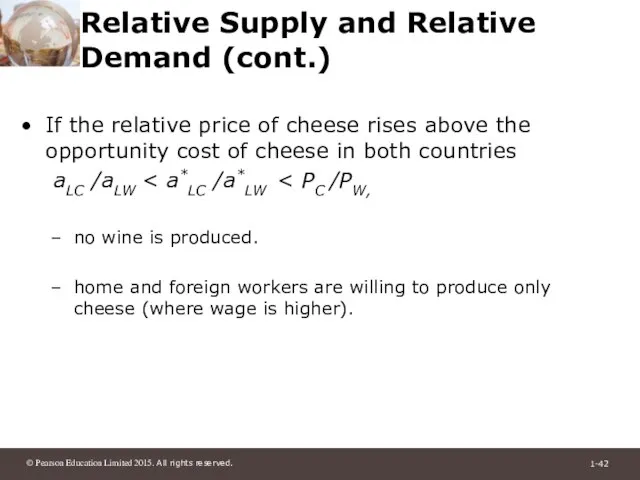
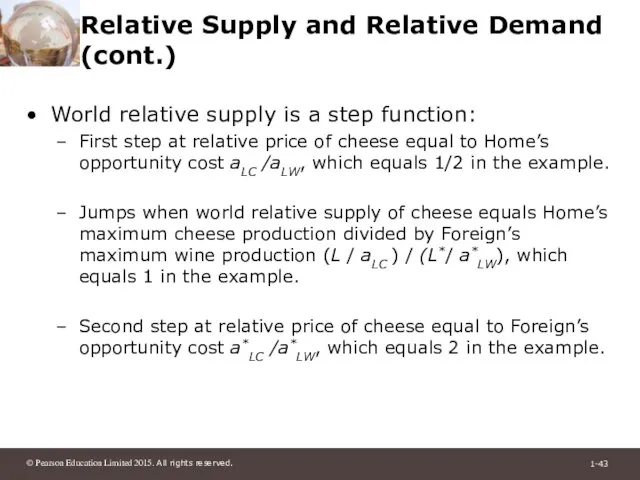
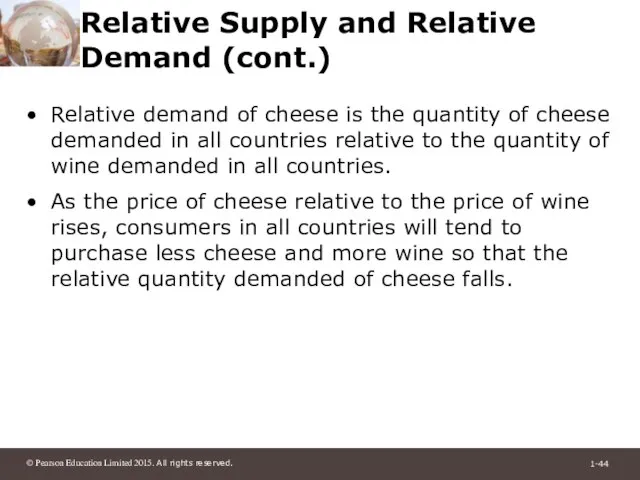
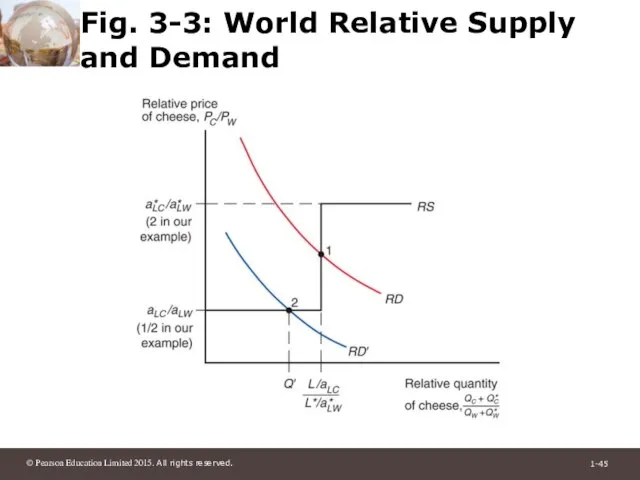
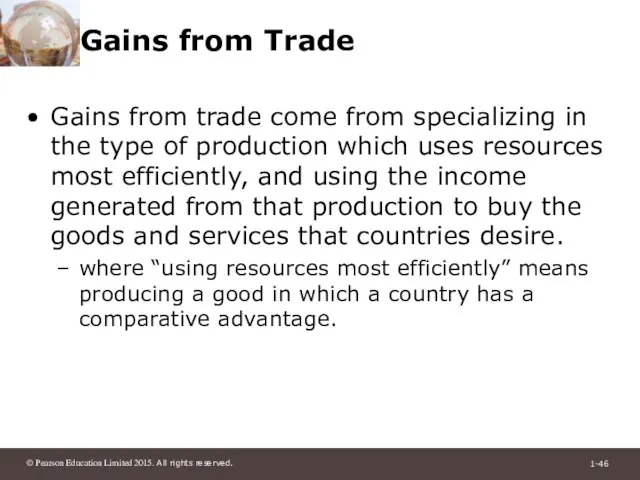

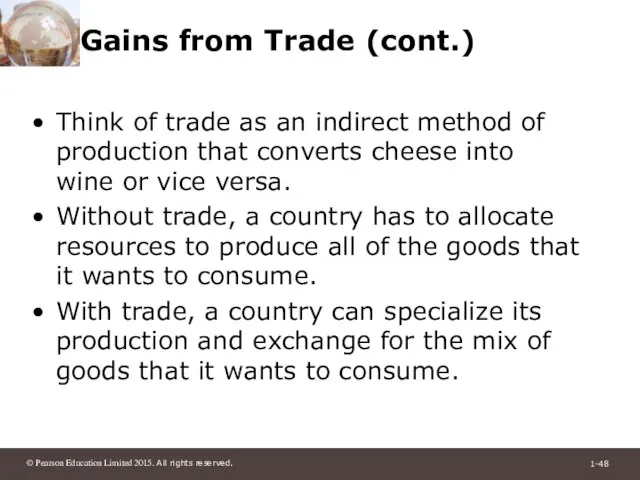
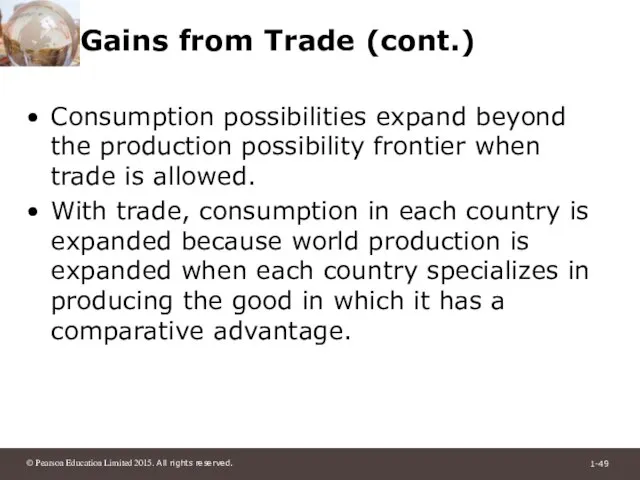
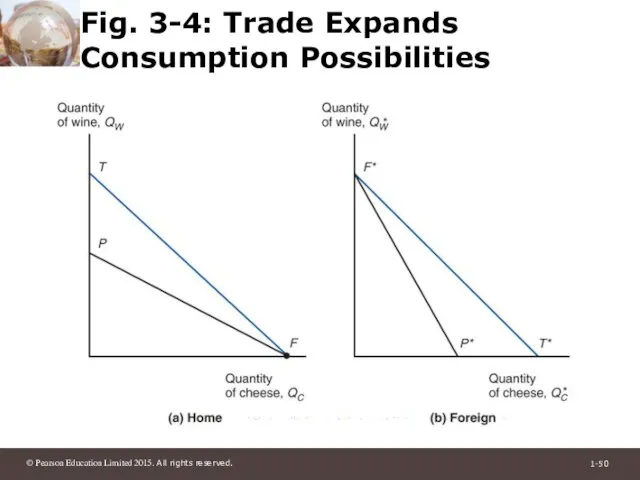

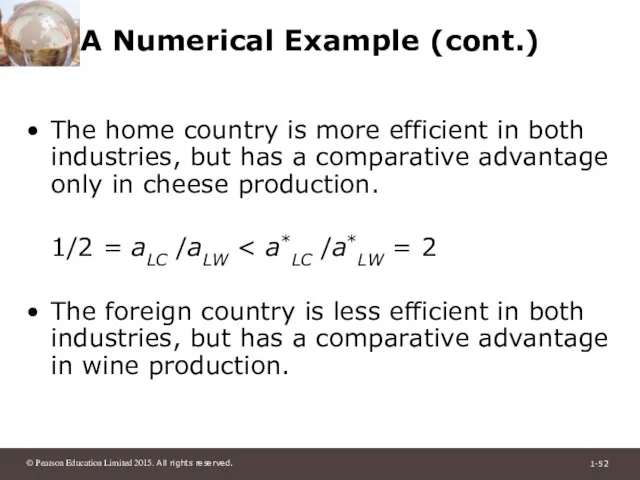
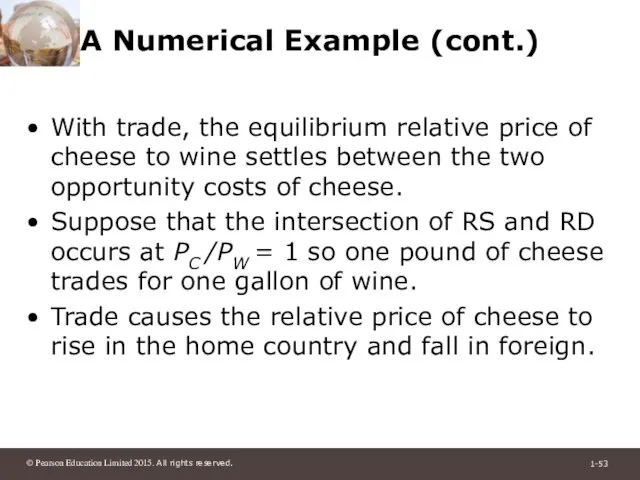


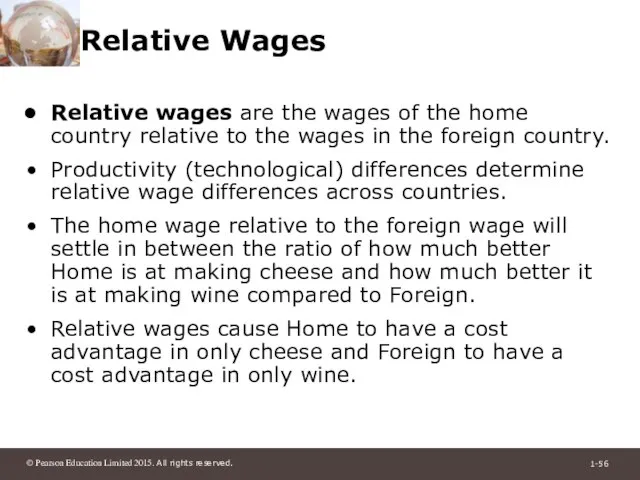
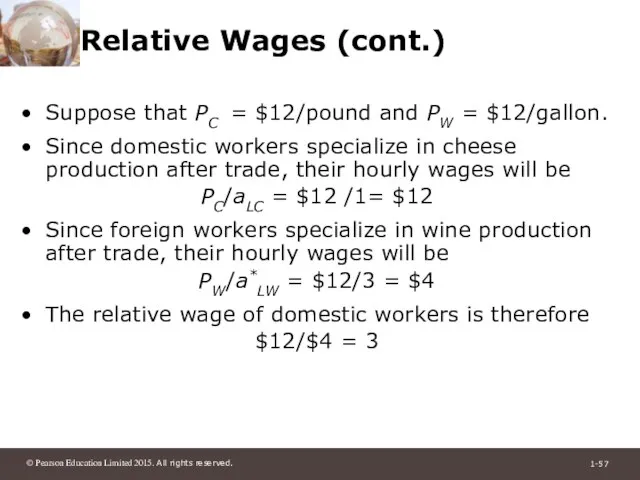
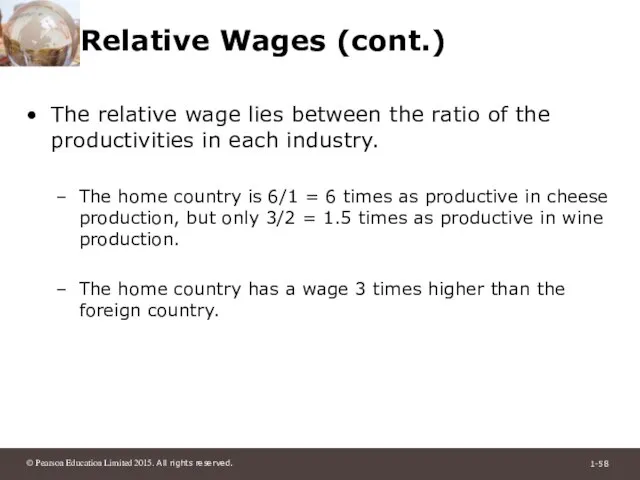

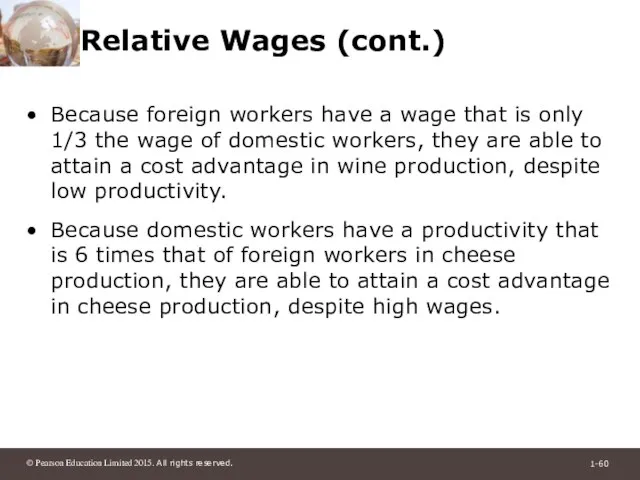
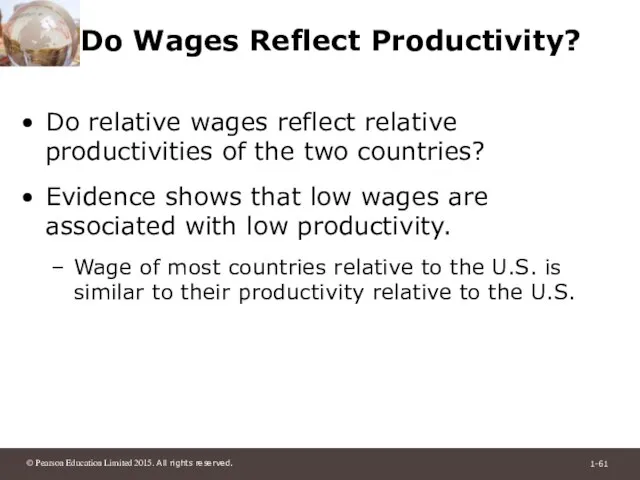
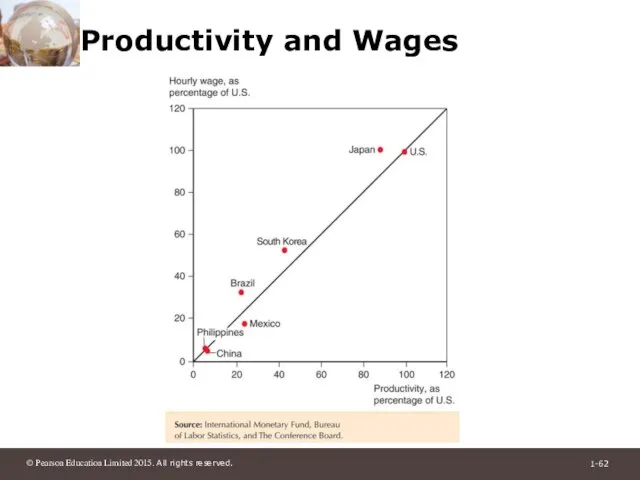


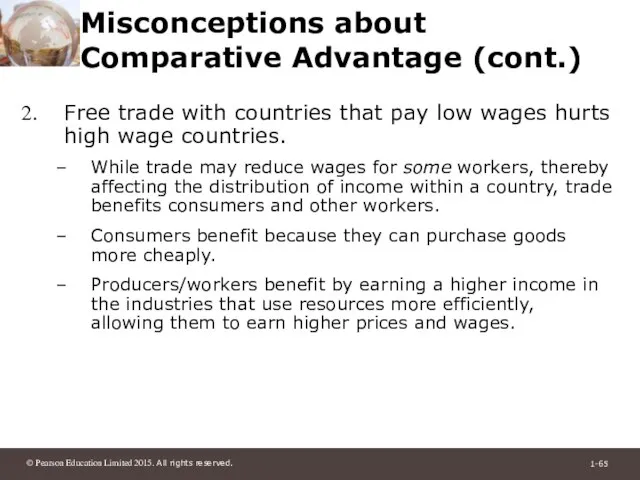





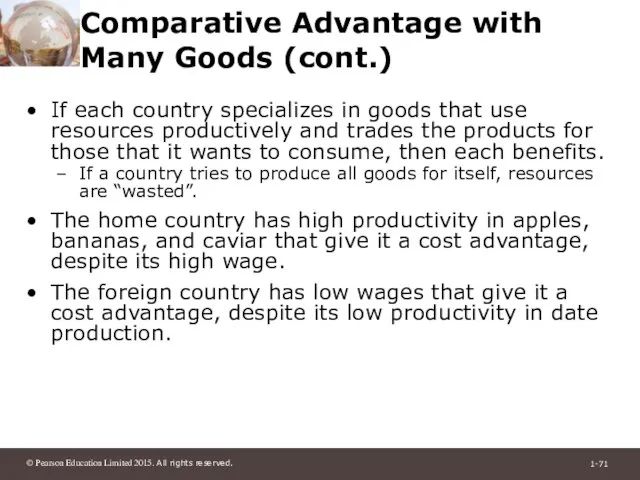
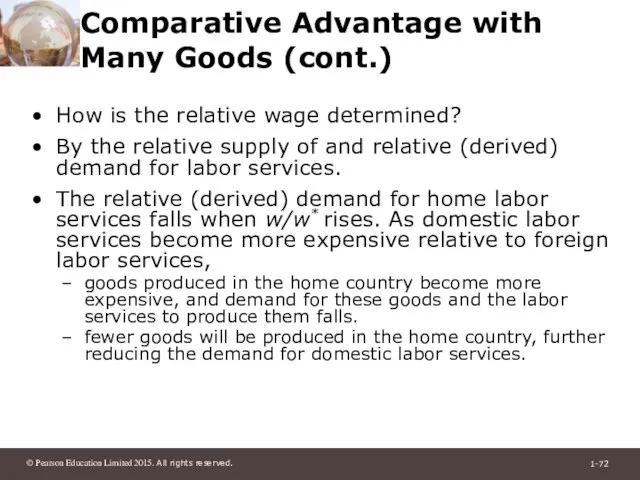
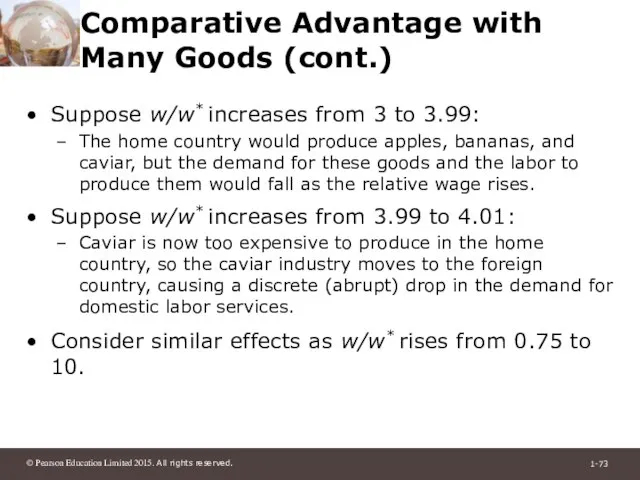

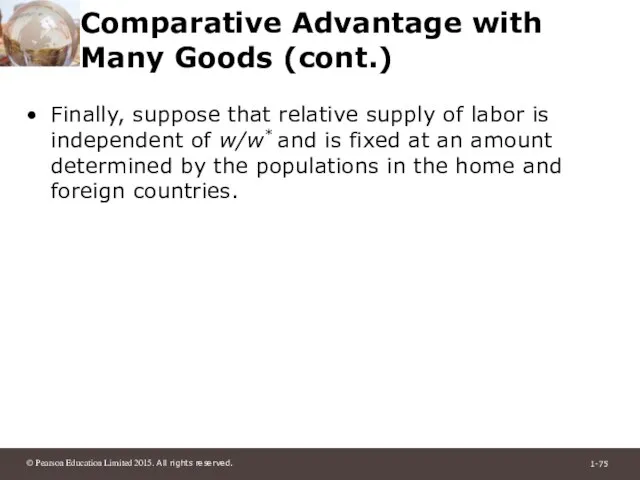
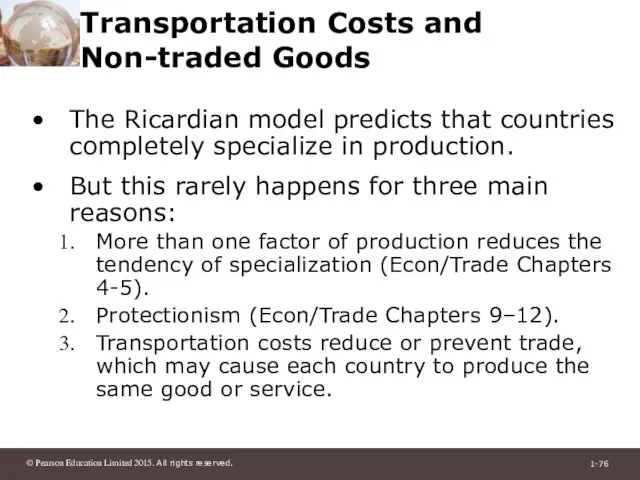


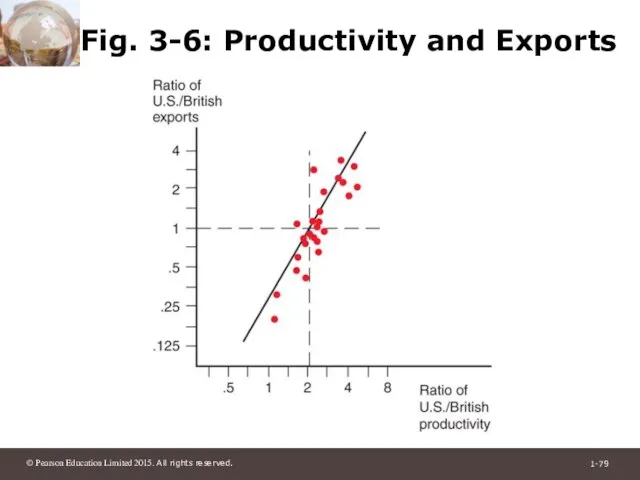

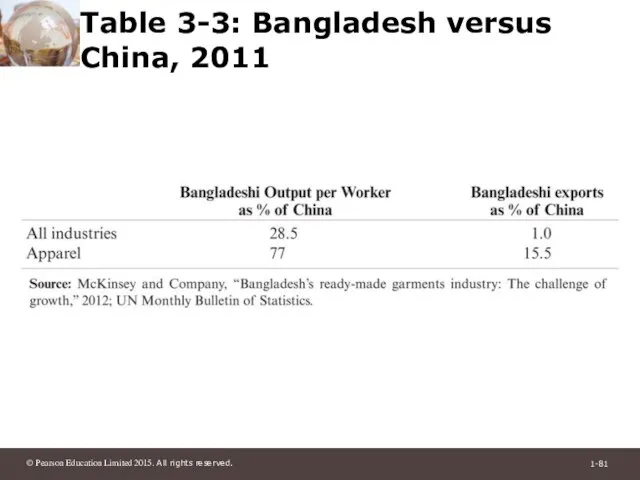
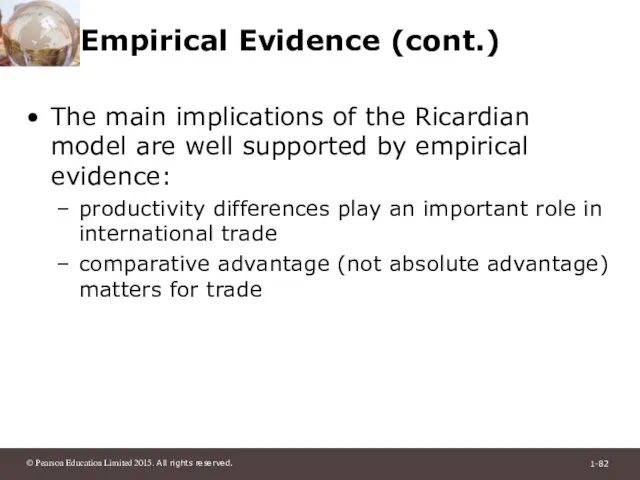
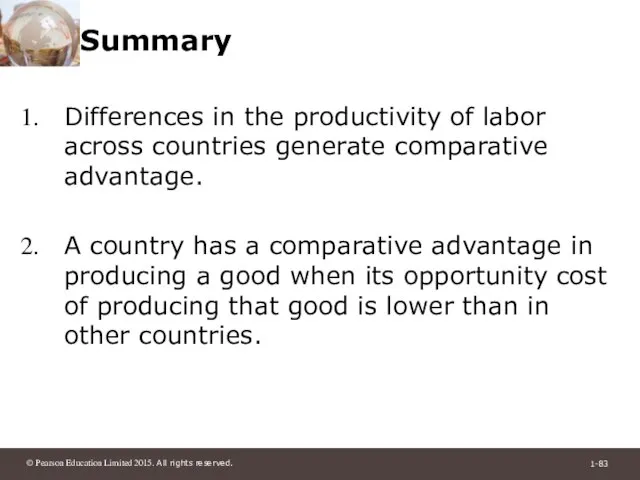
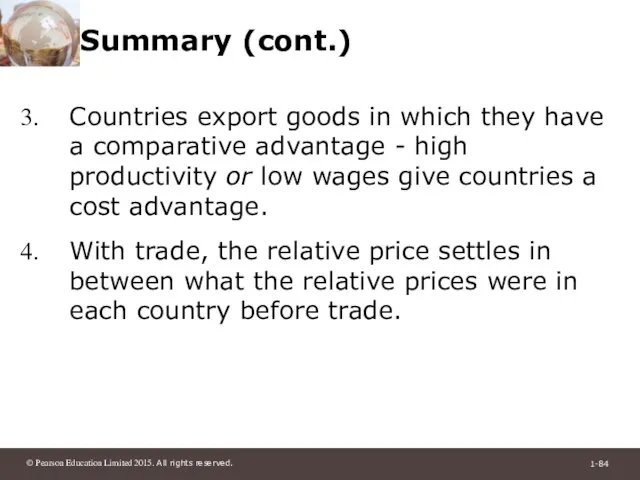
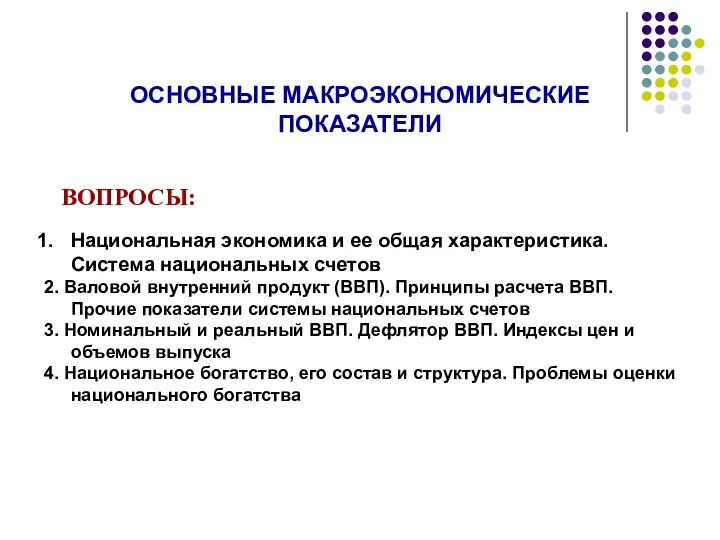 Основные макроэкономические показатели
Основные макроэкономические показатели Диаграмма №1
Диаграмма №1 Вводный урок экономики. 9 класс
Вводный урок экономики. 9 класс Потребности человека. Главная задача экономики
Потребности человека. Главная задача экономики Бизнес-модель. Общая экономика проекта
Бизнес-модель. Общая экономика проекта Инвентаризация в баре
Инвентаризация в баре Кейнсианство. Кейнсианская теория
Кейнсианство. Кейнсианская теория Полная занятость
Полная занятость Структура современного рынка труда РФ. Занятость населения как показатель баланса спроса и предложений рабочей силы
Структура современного рынка труда РФ. Занятость населения как показатель баланса спроса и предложений рабочей силы 实验经济学 6
实验经济学 6 РАНХ и ГС. Методы оценки эффективности обеспечения национальной безопасности РФ
РАНХ и ГС. Методы оценки эффективности обеспечения национальной безопасности РФ Экономика Лекция №16
Экономика Лекция №16 Статистическое изучение эффективности функционирования экономики
Статистическое изучение эффективности функционирования экономики Типы учреждений. Перевод БУ в АУ
Типы учреждений. Перевод БУ в АУ Deutschland Verkaufprodukten
Deutschland Verkaufprodukten ОБЩЕСТВО
ОБЩЕСТВО Карта задания
Карта задания Потребление, сбережения и инвестиции
Потребление, сбережения и инвестиции Общественные блага и принципы их классификации
Общественные блага и принципы их классификации Введение в экономику
Введение в экономику Международная торговля товарами и услугами
Международная торговля товарами и услугами Перспективы формирования эффективных НИС в странах-экспортерах углеводородного сырья Африки
Перспективы формирования эффективных НИС в странах-экспортерах углеводородного сырья Африки Экономические задачи V
Экономические задачи V Солнечный свет как эффективный источник электрической энергии
Солнечный свет как эффективный источник электрической энергии Категория регион в современном научном дискурсе
Категория регион в современном научном дискурсе Межнациональные корпорации
Межнациональные корпорации Экономический анализ. (Модуль 2)
Экономический анализ. (Модуль 2) Т.1.1 Макро как наука (1)
Т.1.1 Макро как наука (1)